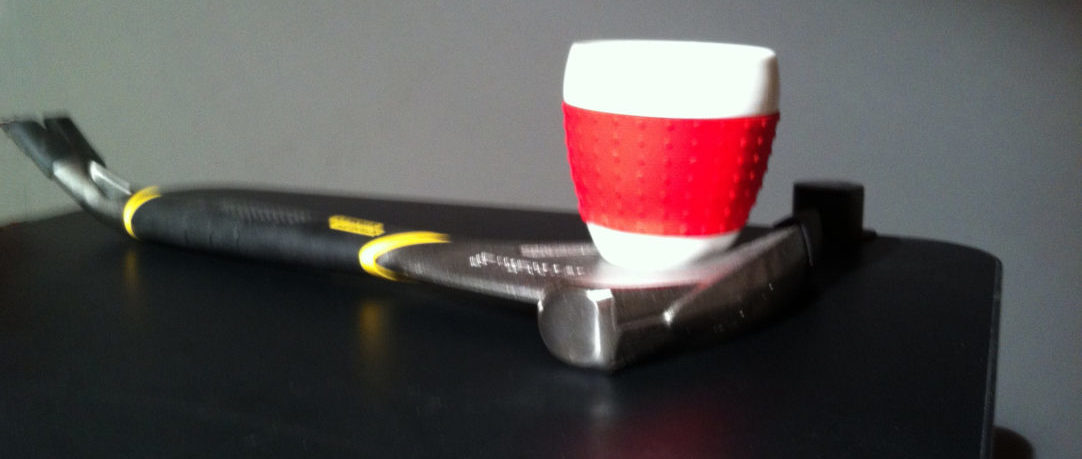Reality and its Augmentation
My goal here is to do a quick fleshing out of the term Augmented Reality (AR), since I find its meaning, including my own use of it, imprecise.
Axes
I’ll use these axes for analysis, even though they’re not completely orthogonal, they highlight significantly different factors:
- Physical Scale: Personal <-> Environmental
- Immersiveness: Peripheral <-> Enveloping
- Permanence: Dynamic <-> Static
- Audience: Personal <-> Group
- Geolocation: Relative to user <-> Fixed Geolocation
For simplicity I’ll use a non-quantitative 5-point scale in which 1 indicates that something is solidly characterized by the first descriptor of the axis and 5 indicates that something is solidly characterized by the final descriptor (given the way I’ve ordered the descriptors 1 is smaller, and more personal while 5 tends to be larger, and more permanent
I’ll just grant up front that reality is a fluid concept. However, for this discussion, lets just postulate a base case of being outdoors, standing on firm ground, in a non-hostile environment (no hurricanes, charging tigers, with comfortable temperatures) during daylight hours.
Given this base, any manmade affordances are augmentations of reality, and because they need to interact with us, they must supersede some part of the real environment what would have been available to us in their absence. Three factors incorporate aspects of this: Physical Scale — how big is it; Immersiveness — the relative portion of our sensory capacity it overrides; Permanence — how long does it last. The meaning of the other two axes Audience and Geolocation, is clear from their labeling.
What follows is my placement the most salient augmentations along these axes. The list is idiosyncratic, not designed to be exhaustive, and subject to revision.
Physical scale 5; Immersiveness 3; Permanence 5; Audience 5; Location 5
Infrastructure: Roads, sidewalks
I include roads, sidewalks as augmentations of reality, and start with them because they have historically been some of our most significant artifacts. Viewed as augmentations, roads and sidewalks are also the most intrusive augmentations we commonly encounter. They are relatively immersive and impact upon a variety of sensory modalities: vision; touch; smell; hearing. They are relatively permanent and are there whether we want them or not. Although they generally make movement easier and safer, they implicitly indicate that certain directions are preferable to others. Similarly, their duals: fences, walls and other barriers implicitly indicate that certain directions are not optimal.
A couple key points: these augmentations aren’t individualized by any means, and also, being permanent, they have no guarantee of being at all current: there’s one on ramp to nowhere courtesy of bostonstreetcars.com.
Interestingly, while roads & sidewalks don’t have any spontaneous, ad hoc, bespoke implementations, walls and other barriers do. Many of these ad hoc implementations are invisible, whether they be invisible dog fences, ankle bracelets, or those invisible IR things that museums use to keep you from getting too close to the artwork.
The audience for roads and walls is very broad, and even though they may be tuned to specialized vehicles or uses, they make relatively few assumptions about the audience, especially in this era of greater emphasis on accessibility.
Physical scale 3; Immersiveness 2; Permanence *; Audience 5; Location 5
Signage
Fixed signs (even they’re only a piece of paper fixed to a pole with adhesive tape), have low->medium permanence and are tailored to the signmaker’s expectation of the onlooker. Although there’s a wide range of expectations here, from the deli to the nuclear waste repository (NWR), the goals tend to be specific to the local culture (NWR’s excepted),
Physical scale 3; Immersiveness 1; Permanence 4; Audience 1; Location 4
Venue Affordances
Usually found in locations that have substantial ad-hoc traffic: Automatic (store) door openers, customer announcers, shoplifting alarms. had the multi-year permanence of interior architectural features fixed use. The audience is very local & geospecfic, e.g., the individual/small group
Computational Enhancement of existing Augmentations
This is where we start to get important aspects here involve personalization, and ambience
Physical scale 3; Immersiveness 3; Permanence 4; Audience 5; Location 5
Environmental Awareness
Local reality can also be computationally augmented without the use of phones or other personal computing devices, e.g., displays for visualizing environmental data. One example is the air quality sculpture in Seoul https://inhabitat.com/living-light-is-an-interactive-real-time-map-of-seouls-air-quality/ or the next day’s weather forecast that’s often designated by the shift in lighting (sunny->blue, rainy->red) of major buildings in a city
Personal Computational Augmentation
Computational augmentation of your local reality with a single person device ranges from applications that supplement your current environment and those which place something completely fictional into it.
Physical scale 1; Immersiveness 3; Permanence 2; Audience 1; Location 4
Situational Awareness
Applications that supplement your environment may work within your field of view or adopt new perspectives as appropriate. Translating street signs is a great example that retains ones embodied perspective in the environment, while Yelp and similar apps shift your perspective to a bird’s eye/map view provide a radically different viewpoint to display what is close, even if it is currently out of sight.
Physical scale 1; Immersiveness 4; Permanence 1; Audience 1; Location *
Reality Expansion
Augmented Reality applications that (appear to) place something in your environment are the next level of this. Variations here are whether they key off of something in the environment, e.g. Geolocation or a specific feature gleaned by the vision system. Some examples are games, historical narratives, and aesthetic enhancement.
Physical scale 1; Immersiveness 5; Permanence 1; Audience 1; Location 1
Reality Replacement
Virtual Reality applications are so immersive that they essentially replace your environment with a new one of its own making. The nature of the VR goggles (at this point, mixed mode AR/VR google are under development).

Leave a Reply